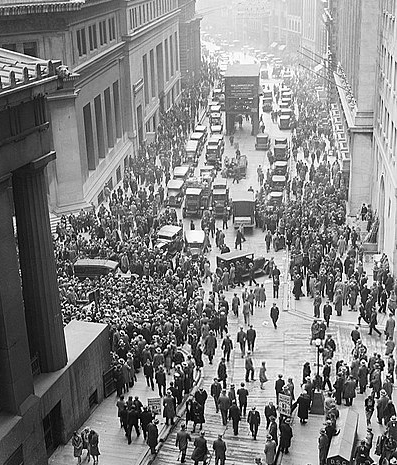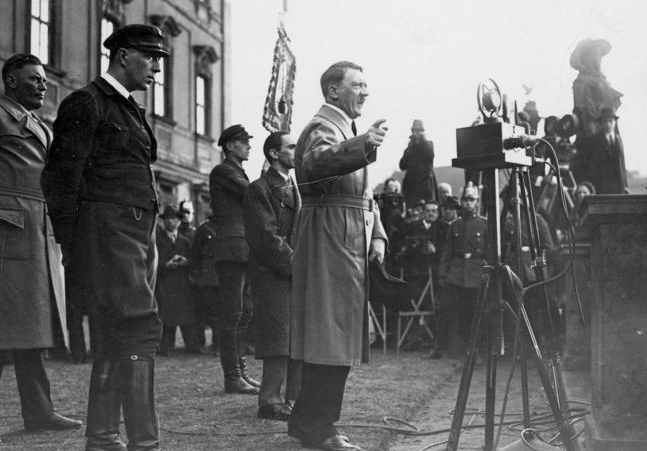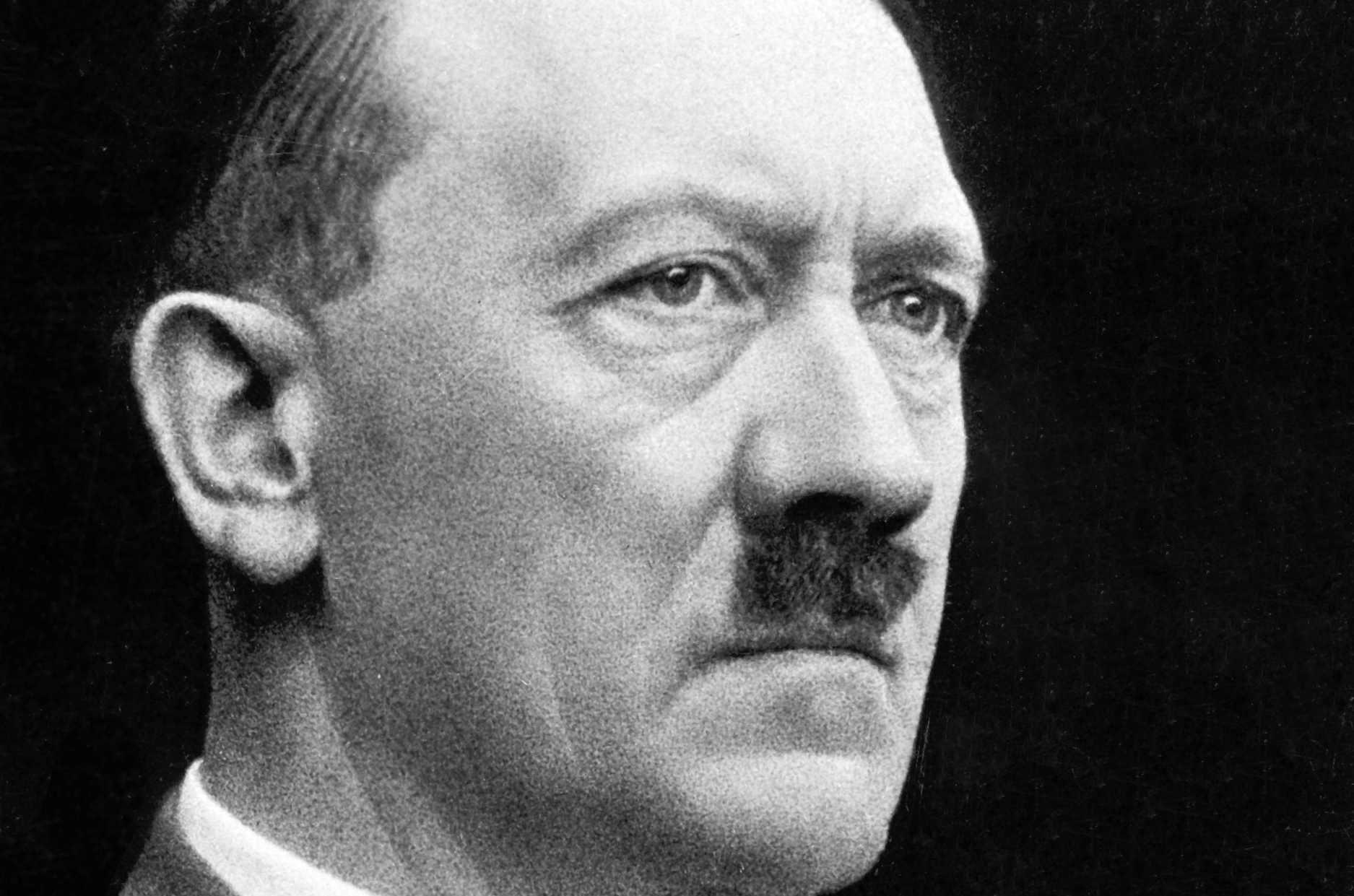Had you voted in the German election of July 1932, there’s a 37% chance you’d have supported the Nazi Party. It’s a scary statistic and one that may seem hard to fathom given what the Nazis went on to do.
Indeed, we tend to think of Nazi Germany as a villainous dictatorship ruled by history’s ultimate villain. But before Adolf Hitler became a dictator and turned his country into a fascist state, the Nazi Party was surprisingly popular with the German electorate.
And rather than simply ignoring this uncomfortable truth, it’s important to understand why so many Germans voted for Hitler and the Nazis.
Desperate times
Burdened with the demands of the Treaty of Versailles, the decade after the Great War wasn’t a pleasant time for the people of Germany. But their livelihoods were put under greater strain by the Wall Street Crash in October 1929.

This had a huge impact on Germany, as the country relied on loans from America. When the loans started to dry up and repayment of the old ones was due, the German economy collapsed.
Production halved between 1929 and 1932, leading to millions of unemployed citizens. Disaffected youths (especially men) roamed the streets aimlessly or wandered through public parks with no sense of purpose.
Prostitution became more widespread as well, and there was also a rise in gang culture. People would scavenge for food, steal, fight with rival gangs, and clash with the police. Communists took advantage of those struggling to support themselves. They mobilized the young for their own political ends by organizing strikes and contributing to the general aura of chaos.
But it wasn’t just the working class who were affected. White-collar workers in the financial sector were hit hard by the Wall Street Crash. Plenty of other middle-class industries, such as tourism, catering, and retailing, also suffered.
To many discontented citizens, Hitler and the Nazis offered a way out, and with the help of some powerful propaganda, they became a force to be reckoned with.
The propaganda machine
Joseph Goebbels was the mastermind of Nazi propaganda. From his headquarters in Munich, he developed a propaganda campaign that resonated with Germany’s broken citizens.
Posters, leaflets, papers, and speeches were all utilized. Voters were given a clear choice: stick with the dying Weimar Republic, or embrace a glorious future with the Nazi Party at the helm. Goebbels took advantage of modern technology as well, using films and gramophone records as part of his campaign. This fed into the image of the Nazi Party breaking from tradition and embracing modernity.

Marching Brownshirts, banners, flags, and the military poses of the Nazi leaders all gave an impression of ruthlessness and power. Goebbels’ campaign was simply impossible to ignore.
The Nazis also adapted to their audience. They trained their speakers to alter their speeches based on who was listening and would advertise specific topics for certain areas to attract as many people as possible to their meetings.
But the biggest attraction was Adolf Hitler. Though it’s hard for us to imagine why so many people were drawn to this man, Hitler was embraced by millions across Germany.
Hitler’s appeal
Hitler’s speeches, particularly during the election campaigns in 1932, were mass spectacles. Thanks to the strength of the Nazi propaganda, he was viewed by many as a national saviour, someone who could unshackle the country from the misery of the current regime.
Hitler’s flying tours helped to popularize the cult of the Führer and he was able to see millions of people within the span of a few days. The audience would be kept waiting for hours before Hitler’s plane would descend from above. Such a spectacle was complimented by the landing. Young girls would arrive with bouquets of flowers, and bands would provide appropriate music.
As for the actual speeches, Hitler’s main focus was always the condemnation of the Weimar Republic and the importance of taking Germany into a brighter future. He was also surprisingly open about turning the country into a one-party state. He didn’t shy away from his hatred of the Jews, either. This was particularly noticeable in the run-up to the November election in 1932, when Hitler described the Jewish community as a “… plague that has beset almost the entire European continent …”
Antisemitism wasn’t popular with all Germans by any means, but it didn’t stop the Nazis’ impressive electoral victories.

The results
In the September election of 1930, the Nazis received 6.5 million votes. This was a major victory given they received less than a million in 1928. And whilst they weren’t the largest party, their campaign strategies were clearly working.
Their biggest democratic success came in 1932. In the July election, 14 million Germans voted for the Nazis. They were now the largest party with 37% of the vote and 230 (out of 608) seats in the Reichstag. Just four years ago, they had received less than 3% of the vote.
The election in November 1932, on the other hand, was less successful. The Nazi Party only picked up 33% of the vote and 196 parliamentary seats. Though the Nazis saw this as a failure, they were still the largest party by a considerable margin.
The twilight of democracy
For the Nazis, fair democracy had run its course. During the run-up to the election in March 1933, they utilized violence and fear against their political opponents.
They ended up with 44% of the vote, but this still wasn’t enough for a parliamentary majority. So, by using even more intimidation, the Nazis were able to pass the Enabling Act on the 23rd of March, which essentially gave Hitler the powers of a dictator.
Had the people of Germany known the full extent of what the Nazis were going to do, the election results in the early 1930s would surely have been different.
But as strange as it may seem, Hitler’s message and the Nazi propaganda resonated with millions of people who were desperate for change.

Purchase my history quiz book: https://www.amazon.co.uk/dp/B0BLFWPMKL
Contact: jacobwilliamwilkins@gmail.com





